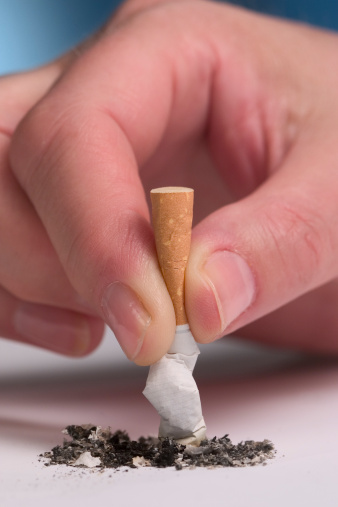 The list is very, very long. Smoking cigarettes is directly linked with a wide variety of health concerns, stretching from the less important (say, chronic bad breath) to the life- and-death important (lung cancer). In a brand-new health breakthrough, researchers have uncovered how cigarette smoking weakens your bones.
The list is very, very long. Smoking cigarettes is directly linked with a wide variety of health concerns, stretching from the less important (say, chronic bad breath) to the life- and-death important (lung cancer). In a brand-new health breakthrough, researchers have uncovered how cigarette smoking weakens your bones.
About two decades ago, scientists first identified cigarette smoking as a risk factor for osteoporosis and bone fractures. This new study, published in the “Journal of Proteome Research,” has shed light on how lighting up actually weakens your skeleton.
PLUS: Exercise Could Keep Osteoporosis at Bay
Researchers concluded that cigarette smoke makes the body produce excessive amounts of two proteins in particular. These trigger a natural body process that breaks down bone.
Older studies that looked at this issue suggested that the many toxins within cigarette smoke weakened bones by affecting the activity of “osteoblasts” and “osteoclasts.” Osteoblasts are cells that build new bone and osteoclasts are cells that break down old bone. Weakening of the bones, known famously as osteoporosis, can increase the risk of fractures and is a major cause of disability among older people.
To understand how cigarette smoking weakens bones, the scientists analyzed differences in genetic activity in bone marrow cells of smokers and non-smokers. They discovered that human smokers produce unusually large amounts of two proteins that foster production of bone- resorbing osteoclasts compared to non-smokers. Thus, cigarettes lead to more cells in the body that break down bone, as opposed to ones that build bone. (Further experiments with laboratory mice confirmed this finding.)
Osteoporosis develops when removal of old bone outpaces the creation of new bone. In early stages of bone loss, there may be no symptoms at all. No pain. So in this case, it’s like a silent trap being set. Only when bones have been weakened considerably will you start noticing signs of osteoporosis.
These signs are led by:
— Back pain (a vertebra has fractured/collapsed)
— Gradual loss of height
— Your posture is stooped
— You suffer a bone fracture too easily
Postmenopausal women are at highest risk for osteoporosis. It’s important to keep a diet high in calcium and vitamin D, and to exercise regularly.
